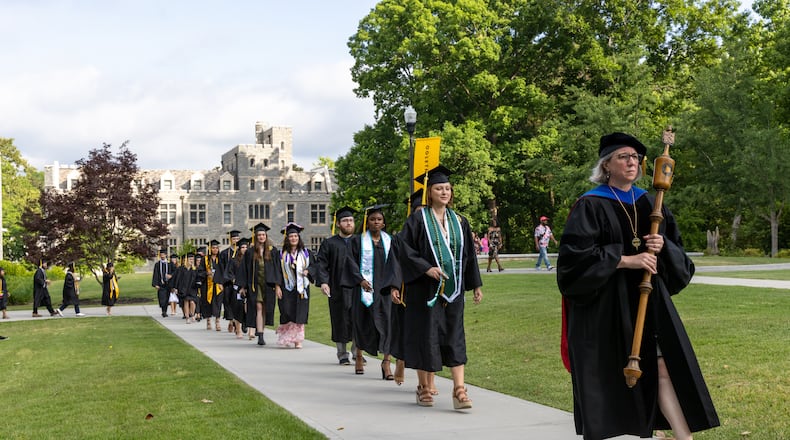Nick Ladany is the president of Oglethorpe University in Atlanta and a counseling psychologist. In this guest column, Ladany says student mental health needs demand action and attention at the K-12 and college level.
By Nick Ladany
We’re facing a mental health crisis, and it’s going to get worse before it gets better.
The U.S. surgeon general in December issued an advisory on the mental health emergency among children, adolescents and young adults that was exacerbated by the COVID-19 pandemic. A 2022 Centers for Disease Control and Prevention report discloses nearly 1 in 5 high school students has seriously considered suicide.
The problem is amplified on college campuses, where a 2020 CDC report revealed about 1 in 4 adults between the ages of 18 and 24 had seriously considered suicide. The demands for more mental health resources were already climbing on the campuses of our higher education institutions before the global shutdown, and now students are reporting heightened stress, anxiety and depression as a result of rising isolation, grief and economic uncertainty.
Credit: contributed
Credit: contributed
The tail of this pandemic is long, and we must actively prepare now. We must make providing effective mental health services a priority and invest in the resources that will help us do so.
Meeting a student’s mental health needs is foundationally as important as meeting their nutritional needs. As educators, we can’t support student academic success without seeing to their health needs first.
We’ll feel the ripple effects of this health crisis for years to come. And the combined grief and trauma it leaves behind compounds with the other challenges young people face, including academic stress and pressures from social media. They witness the social and interpersonal cruelty our society is embracing and the resentment and anger so many people feel about their position within it as we are bombarded with news about racist attacks, school shootings and other ways people are hurting one another.
Sadly, it too often takes a tragedy to motivate us to do something differently, and now even the motivation from tragedies tends to wane quickly or be stunted by those who want to normalize tragedies. We shouldn’t have to wait to lose another young person before our community cares enough to take more meaningful action.
For our part, colleges and universities need to adopt a long-term model to better support students and move beyond the Band-Aid approach they currently employ. We can find the funds to expand campus counseling services and resources, hire more counselors and make sure our faculty are well-equipped to recognize, accommodate and respond to students who are experiencing mental health issues. And we can do this in a financially sound manner that will cost less than a few rock-climbing walls.
When Oglethorpe University reopened its counseling center last fall, it saw a 52% increase in requests for new appointments. About 78% of Oglethorpe students reported that COVID-19 negatively impacted their mental health. About 65% of new students seeking treatment graduated from high school during the COVID-19 shutdowns.
We’re redesigning our mental health services at Oglethorpe to expand access for more students. Our hybrid in-person, virtual counseling model allows students to access care 24/7. About 60% of our students are students of color, and so are three of our four staff counselors. Oglethorpe is also partnering with other Atlanta-area graduate programs and a nearby residential treatment facility on training opportunities.
Our colleagues in the K-12 space can take a similar approach. Yes, resources are limited. But if we make this a priority, we can find them. It will cost a lot more money and priceless lives if we don’t.
About the Author
The Latest
Featured



